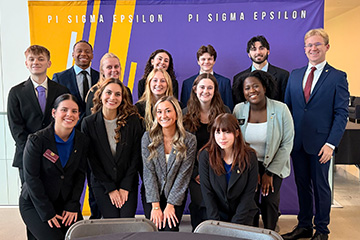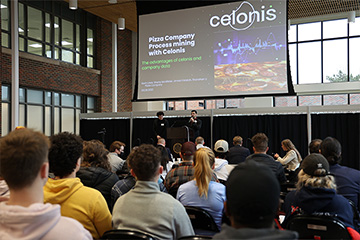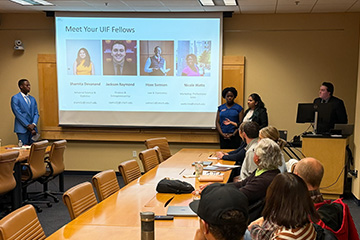What drives students to post inappropriately, even when they know the risks?
New faculty research explores the disconnect between student awareness and behavior on social media – and what it means for their careers.
At the Central Michigan University College of Business Administration, preparing students for career success goes beyond what happens in the classroom. In the article “Investigating the Role of Uses and Gratifications in Inappropriate Social Media Posting by College Students” published in the Journal of Social Media in Society, faculty members Robert Miller, James Melton, and Christine Witt explored a growing concern for students entering the workforce: the long-term impact of what they post online.
Their research investigates why students continue to post inappropriate content on social media – even when they understand that employers are watching. Using a Uses and Gratifications (U&G) framework, the team surveyed 152 undergraduate business students to understand their motivations for using Facebook, Twitter, Instagram, and Snapchat, and how those motivations connected to inappropriate posts.
“We learned [from a previous study] that it wasn’t that they don’t know,” said business communication faculty member James Melton. “It’s just that they think, I don’t need to worry about that yet. It doesn’t seem real until they actually consider themselves to be on the job market.”
That delay in perceived urgency can have real consequences. Studies show that up to 93% of recruiters conduct cybervetting – scanning candidates’ social media presence before making hiring decisions – and as many as half report finding something that caused them to pass on a candidate.
“Once a student is in that job search mindset, their awareness skyrockets,” Melton explained. “But before that, it’s almost like a blind spot.”
The study revealed surprising platform-specific insights. Twitter, a more public and less personal platform, had the strongest correlation between motivations like “passing time” or “self-expression” and inappropriate content. Students were more cautious on private-facing platforms like Snapchat, possibly due to the presence of family and friends in their audience.
“That was counterintuitive,” said Melton. “You’d expect people to be more careful on open platforms. But if it feels like no one’s watching – or if it’s just abstract strangers – they may not feel as accountable.”
So what can educators and mentors do?
“It’s tricky,” Melton acknowledged. “You can’t just tell students to disappear from social media. We did a previous study where we asked students to evaluate simulated profiles of prospective job candidates. One of the job candidates had no online presence, and students found that suspicious – like they were hiding something or maybe just socially odd.”
Instead, Melton suggests helping students take an intentional approach to how they show up online.
“My current research is looking at how people engage in digital self-management – choosing what they participate in and how they shape their presence,” he said. “We have to give students the tools to post thoughtfully and to think about their audience. Not in a fear-based way, but in a way that helps them align who they are with where they’re going.”
At the College of Business, that philosophy aligns with efforts to develop real-world readiness – helping students understand not just what’s at stake, but how to manage their digital identity with intention, strategy, and self-awareness.
To learn more about this study or explore future research collaborations, contact James Melton at melto1je@cmich.edu.




